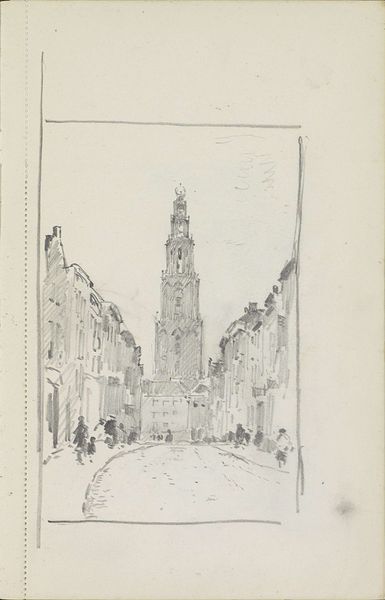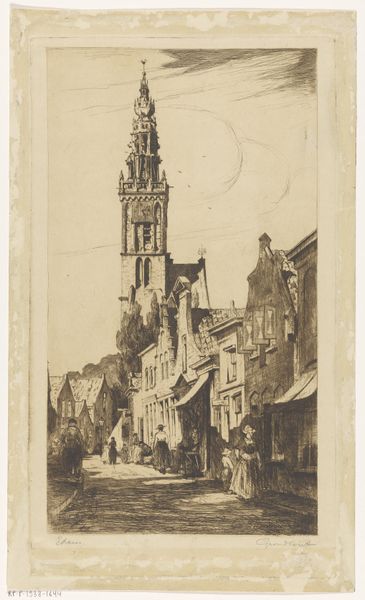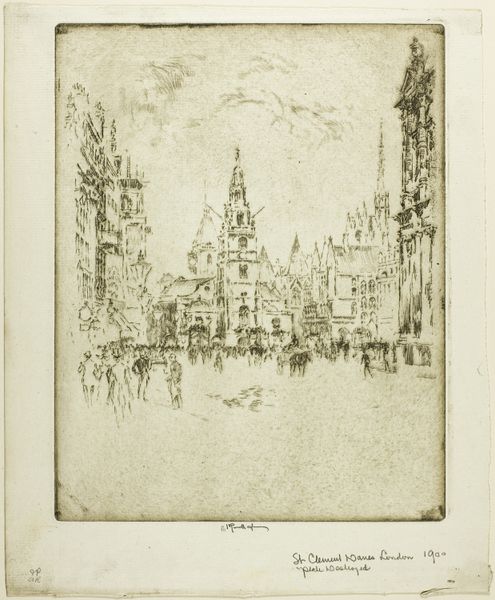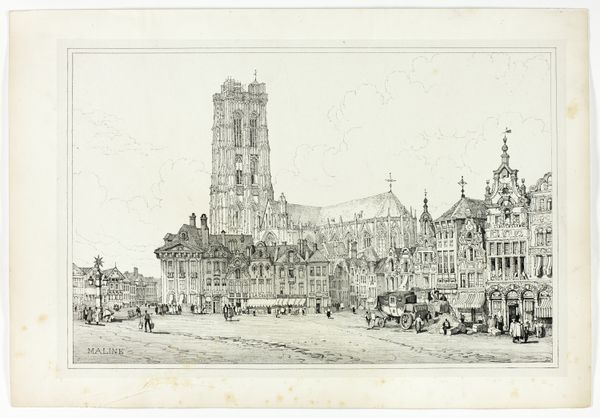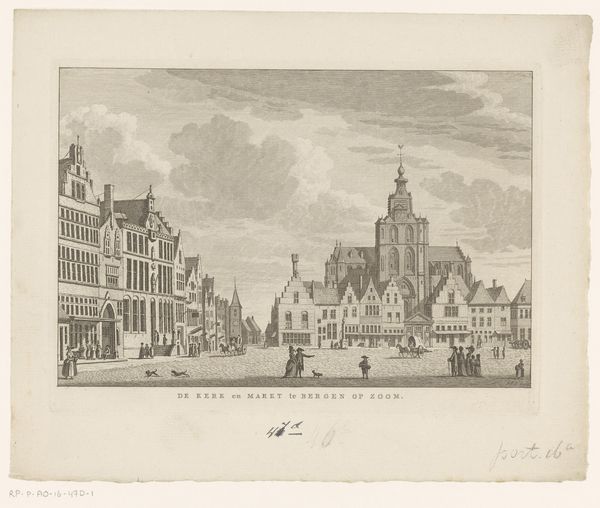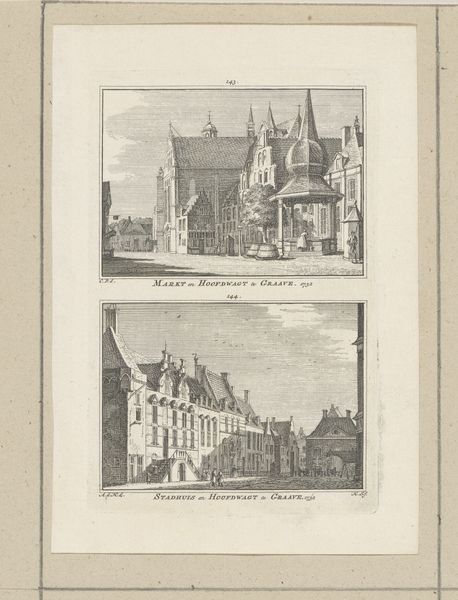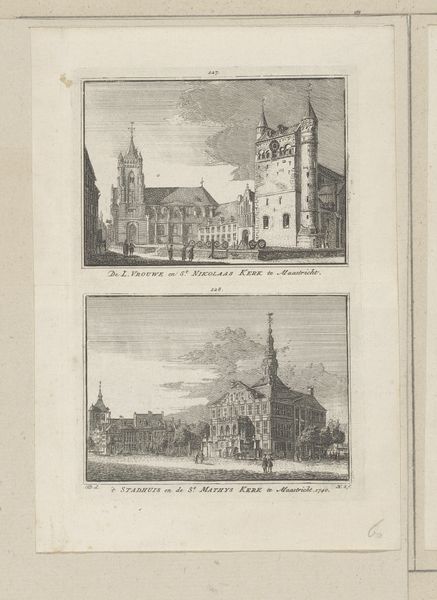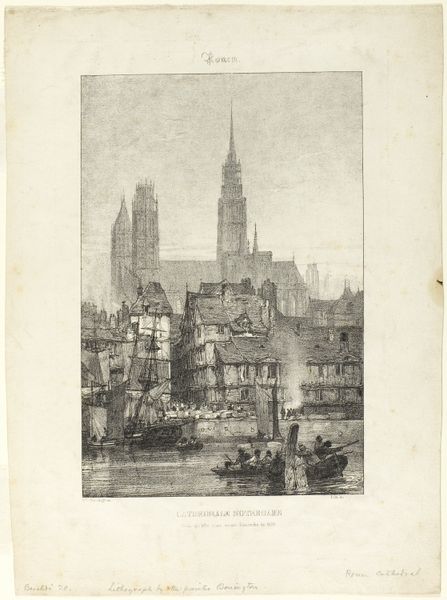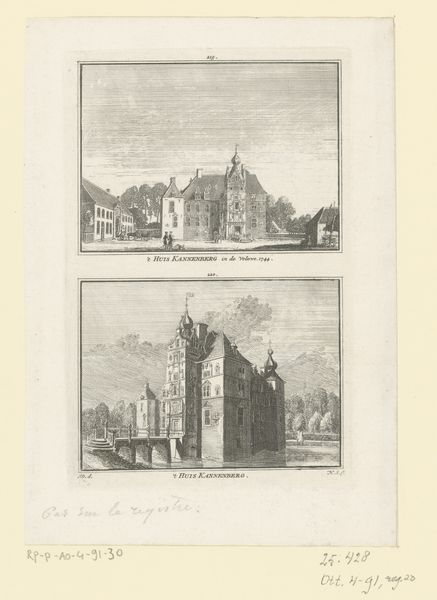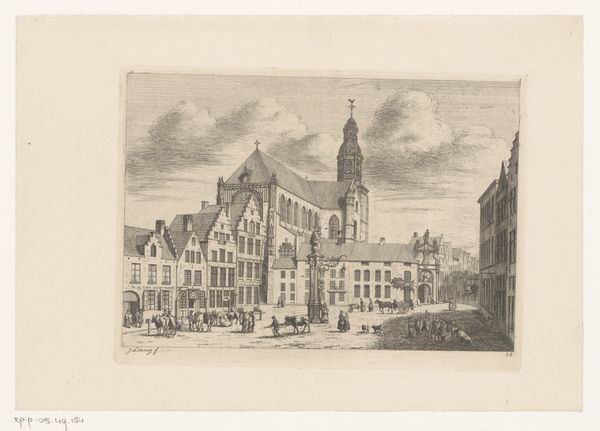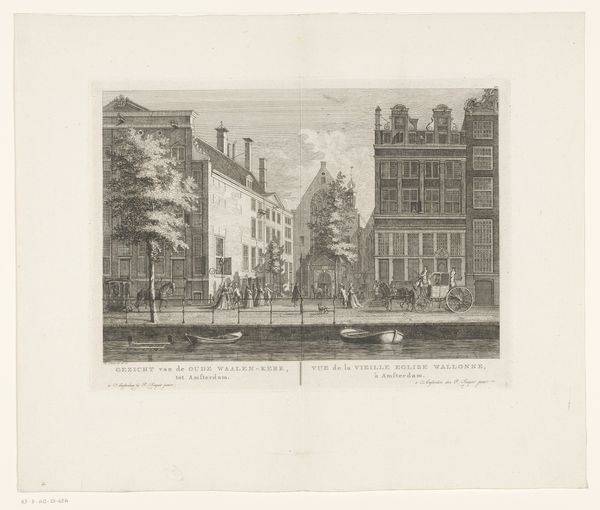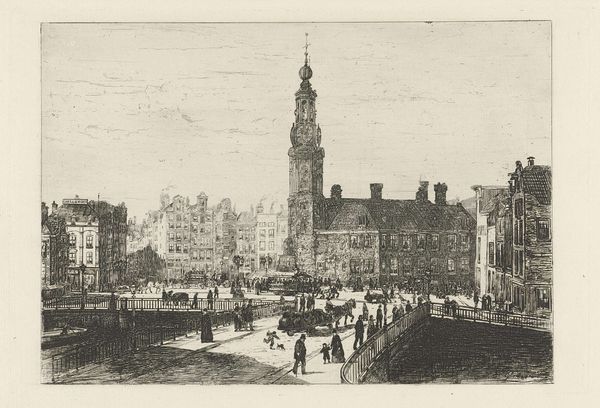
drawing, print, ink, pen
#
drawing
# print
#
pen sketch
#
ink
#
romanticism
#
pen work
#
pen
#
cityscape
Dimensions: height 242 mm, width 141 mm
Copyright: Rijks Museum: Open Domain
Editor: Here we have Johannes Hilverdink's "Jan Roodenpoortstoren en Haringpakkerstoren te Amsterdam," created in 1844 using pen and ink. I'm struck by how delicate the linework is, especially given the monumental nature of the towers depicted. What catches your eye in this print? Curator: I am most interested in how Hilverdink represents labor through the precise application of pen and ink. We see structures associated with trade—towers marking entrances to the city, hinting at flows of goods and people. The very act of depicting them becomes a form of labor itself. How does Hilverdink's method, the act of meticulous rendering, influence our understanding of Amsterdam's economic and social life? Editor: That's a great point. I hadn't considered the drawing process as a reflection of the city's activities. So, the labor of the artist mirrors the labor that took place in these trading hubs? Curator: Precisely! And think about the accessibility of printmaking at the time. The medium allows for mass production and distribution. The artist’s work, itself a product of labor, contributes to a broader circulation of images. What does that say about the artist’s role within Amsterdam’s developing capitalist system? How did it help create value? Editor: It's fascinating to consider how the print functions as a commodity, tied to the city’s own economic engines. By depicting these landmarks, he's also creating a collectible image tied to civic pride. Curator: Exactly. This forces us to rethink the boundary between "fine art" and forms of visual production intertwined with everyday life and labor. This print asks what the relationship between these two categories truly is. Editor: This has given me a whole new perspective on the piece. It’s more than just a historical record; it’s a document of a specific economic and artistic exchange. Curator: And thinking about artistic labor opens the door to interrogating wider value systems embedded in art. I’m so glad we explored this artwork together!
Comments
No comments
Be the first to comment and join the conversation on the ultimate creative platform.
